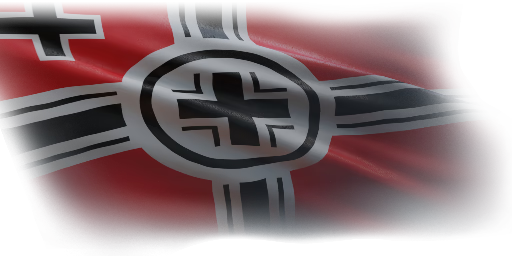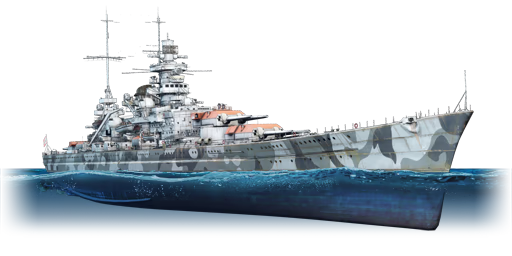The Gneisenau was the second ship of the Scharnhorst-class battleships, although she was commissioned a year before her sister ship in May 1938. Much like Scharnhorst, Gneisenau was initially armed with nine 283 mm cannons due to restrictions imposed by the Treaty of Versailles and Germany’s lack of capability to produce battleship-calibre guns at that time. Gneisenau spent the early years of WWII raiding British convoys in the Atlantic with her sister Scharnhorst. In mid-1940, they also participated in the German invasion of Norway, during which they engaged the battlecruiser HMS Renown and sank HMS Glorious, which had been converted to an aircraft carrier, as well as her destroyer escorts.
After taking part in the Channel Dash in January 1942, Gneisenau was sent back to Germany for repairs. A month later, the British launched air raids against the ship, causing a devastating magazine explosion that effectively disabled it. Due to the severity of the damage, a plan was made to convert the ship to mount six 380 mm cannons (the same ones found on the Bismarck-class) instead of repairing it to its original configuration. Ultimately, due to Hitler’s orders to decommission all surface vessels following the Battle of the Barents Sea in December 1942, work on the Gneisenau was stopped. Her hull was later sunk as a blockship on 27 March 1945 in an attempt to halt the Soviet advance and was scrapped two years later.
The Gneisenau was introduced in Update "Leviathans". Compared to her sister ship, Gneisenau is depicted in her planned reconfiguration of 1943, intended to arm her with proper battleship-calibre 380 mm cannons. These new armaments offer powerful shells and accuracy in exchange for volume of fire. Because of this, Gneisenau leans more towards a traditional battleship in terms of gameplay, capable of taking out enemies at long ranges. However, due to the nature of her conversion, her enlarged magazines are somewhat vulnerable against sufficiently powerful guns, bombs, or torpedoes.









 2 x (450 / 600) %
2 x (450 / 600) % 
 2 x 226 %
2 x 226 % 

